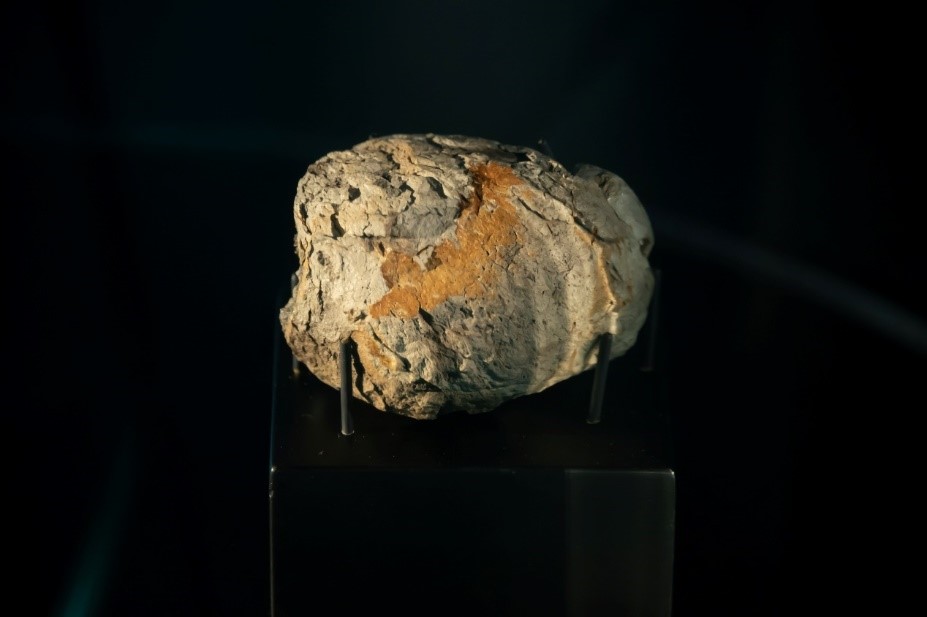Treasure of the palaeontologists - dinosaur coprolite
Published on 14 October 2022
You might be familiar with fossilised dinosaur bones. However, have you seen fossilised dinosaur poop before? Did you know that dinosaur faeces, considered a great treasure by palaeontologists, can be preserved in fossilised form for a hundred million years?

Original coprolite, fossilised faeces of a predatory dinosaur, possibly T. rex. (An exhibit in "The Hong Kong Jockey Club Series: The Big Eight – Dinosaur Revelation" Exhibition)
Fossilised dinosaur faeces, also called dinosaur coprolite, can help us reconstruct the palaeoenvironment during the age of the dinosaurs by providing us with clues to the temperature at that time, the behaviour and diet of dinosaurs, as well as the ecological relationships between and the evolution of different creatures. For example, palaeontologists have analysed dinosaur coprolite and deduced that some dinosaurs swallowed rotten wood, where insects are usually abundant. They have also identified evidence of dung beetles burrowing in dinosaur poop fossils, showing the ecological relationship between the dinosaurs and the beetles.
When carry out research, palaeontologists usually cut the coprolite into thin sections, observe them under a microscope and conduct chemical and isotopic analysis to understand the living environment and habits of dinosaurs. In order to preserve the invaluable dinosaur coprolite, palaeontologists also use non-destructive technology such as computer tomography to reconstruct 3D models for the things embedded in the coprolite. For example, they have used such technology to restore the shape of the insect fragments, plant fragments, and broken bones inside the coprolite to help us understand the eating habits of dinosaurs.
It seems to stand to reason that fossil faeces should be more common than bone fossils as dinosaurs excreted countless faeces throughout their entire lives, yet in most cases only the skeleton remains. Why are bone fossils more common than fossil faeces? This is because bones are hard, even if the flesh is consumed by other creatures or washed away by rain, the bones remain and become fossilised under suitable conditions. The softness of faeces makes them way more susceptible to external disturbances than bones and they can be destroyed completely.
Compared with the faeces of plant-eating dinosaurs, the faeces of meat-eating dinosaurs are more likely to have become fossilised as the food they ate, mainly smaller animals and meat, was rich in calcium and phosphorus, providing abundant resources for mineralisation to turn the faeces into fossils. However, the faeces of plant-eating dinosaurs are mostly composed of cellulose and have usually been subjected to the precipitation of minerals by microorganisms. Palaeontologists try to identify the type of dinosaur producing the coprolite from its geological age, composition and shape. If the fossil faeces are large in size, have a high calcium and phosphorus content and are embedded with small bones from other animals, it can be deduced that the faeces are from a large predatory dinosaur. However, in most cases, even palaeontologists cannot tell exactly which dinosaur species produced the coprolite.






